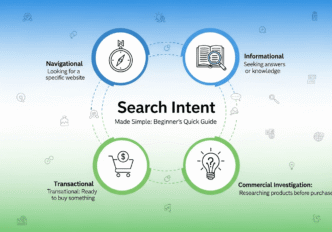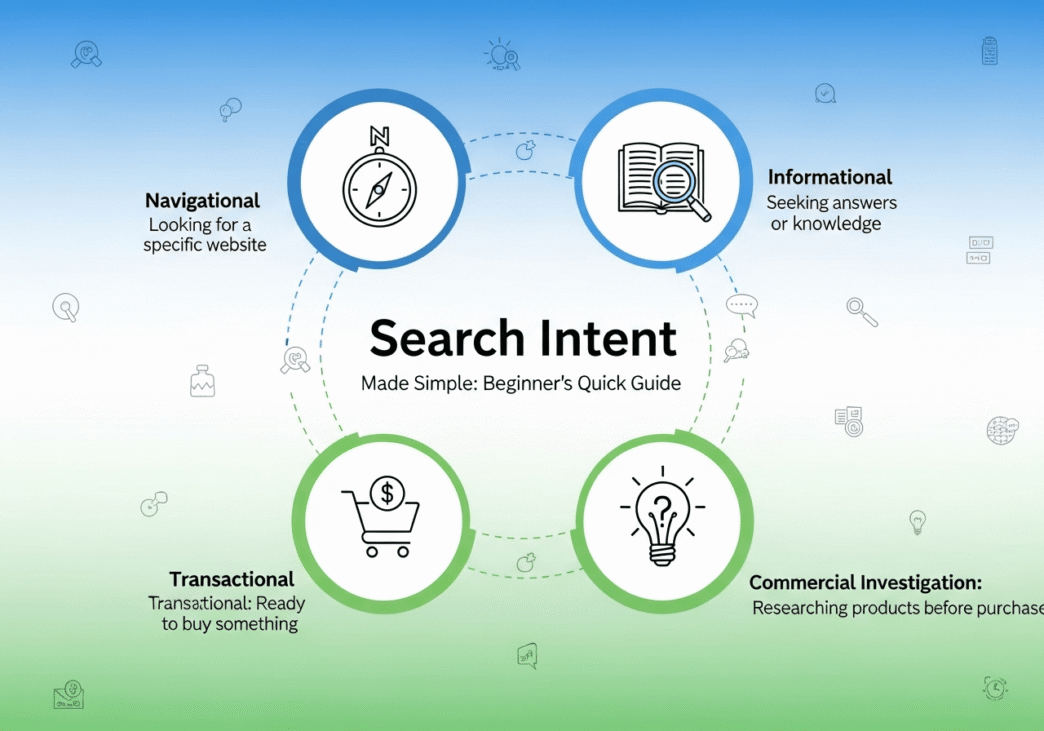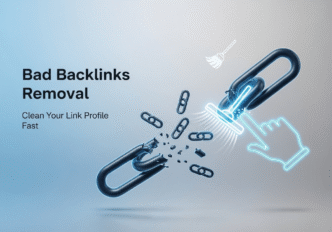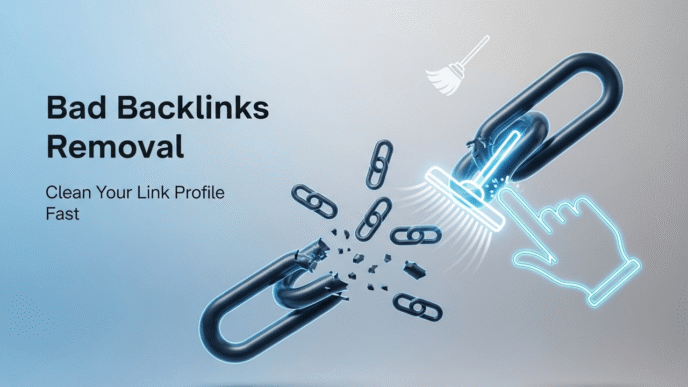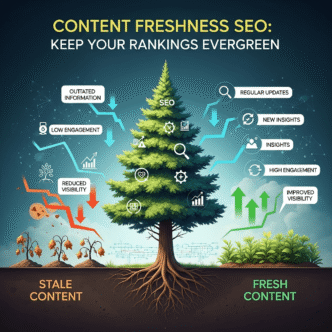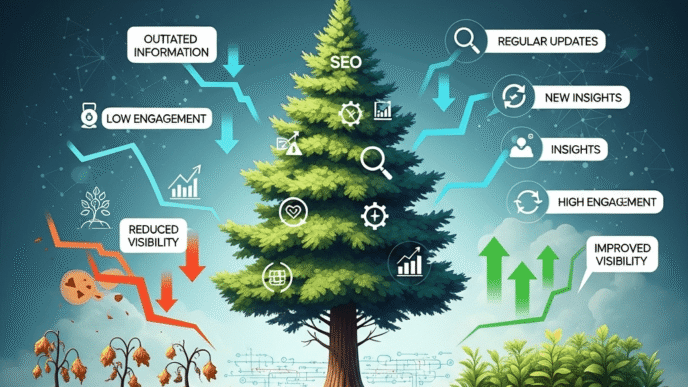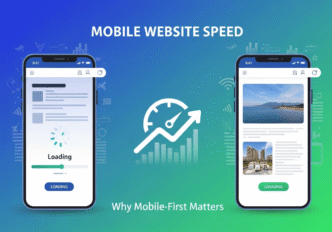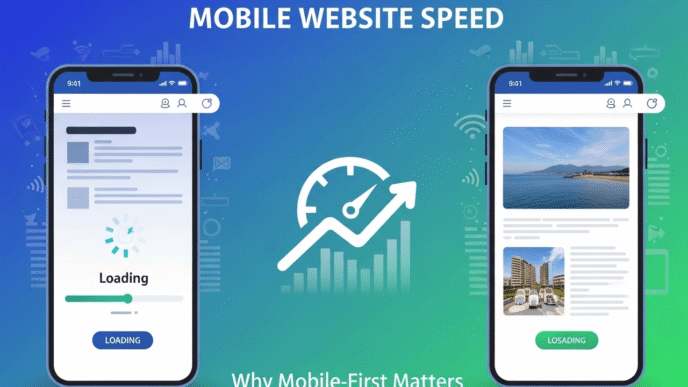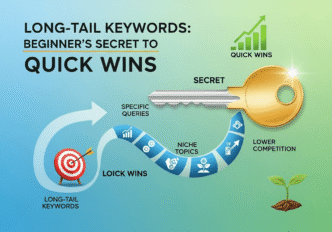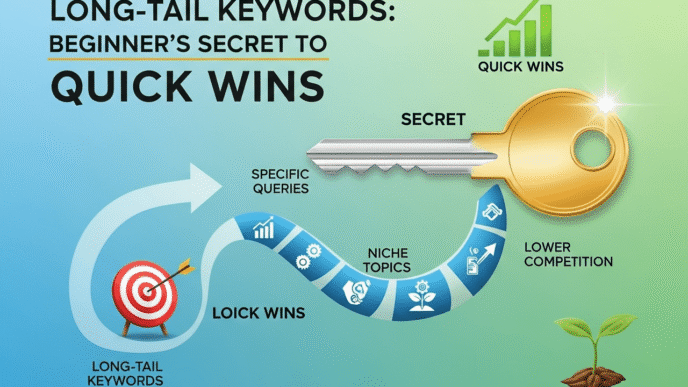Ever feel like you’re throwing spaghetti at the wall with your content, hoping something sticks? You’re not alone! Many beginners struggle with creating content that actually matches what people are searching for. The secret sauce? Understanding search intent for beginners – the “why” behind every Google search that can transform your content from invisible to irresistible.
Think of search intent as being a mind reader for your audience. When someone types “best running shoes,” are they ready to buy, just browsing, or looking for expert reviews? Getting this right means your content shows up exactly when people need it most.
Table of Contents
Toggle
What Is Search Intent? (And Why Should You Care?)
Search intent is simply the reason behind a user’s search query. It’s what someone hopes to accomplish when they type those words into Google.
Understanding user intent is like having a GPS for your content strategy. Instead of wandering around hoping to reach your destination, you know exactly where your audience wants to go.
Here’s the thing: Google’s gotten scary good at figuring out what people actually want. If your content doesn’t match the search query intent, you’re essentially invisible in search results. Ouch!
The 4 Types of Search Intent Every Beginner Should Know
Let’s break down the main keyword intent types with examples that’ll make everything crystal clear:
1. Informational Intent – The Knowledge Seekers
These searchers want to learn something. They’re asking “how,” “what,” “why,” or “when.”
Examples:
- “How to tie a tie”
- “What is climate change”
- “Best time to visit Japan”
Pro Tip: For informational queries, create comprehensive guides, tutorials, or explainer content. Think Wikipedia meets your friendly neighbor who actually knows stuff.
2. Navigational Intent – The Direct Route Takers
People know where they want to go; they’re just using Google as a shortcut.
Examples:
- “Facebook login”
- “Nike official website”
- “YouTube”
3. Commercial Intent – The Window Shoppers
These folks are researching before making a purchase decision. They’re comparing options and looking for the best deals.
Examples:
- “Best smartphones 2025”
- “iPhone vs Samsung comparison”
- “Cheap flights to Europe”
4. Transactional Intent – The Ready-to-Buy Crowd
These are your hot leads! They’re ready to pull out their wallets.
Examples:
- “Buy Nike Air Max”
- “Book hotel in Paris”
- “Download Photoshop trial”
How to Analyze Search Intent Like a Pro
Keyword Intent Analysis Made Simple
Here’s your step-by-step process for intent-based SEO:
- Look at the search results – Google’s already done the heavy lifting
- Check the SERP features – Shopping ads = transactional, featured snippets = informational
- Analyze the language – Action words like “buy” scream transaction
- Consider the searcher’s journey – Are they just starting research or ready to purchase?
| Intent Type | Common Keywords | SERP Features | Content Type |
|---|---|---|---|
| Informational | How, what, why, guide, tutorial | Featured snippets, knowledge panels | Blog posts, guides, videos |
| Navigational | Brand names, login, official | Site links, knowledge panels | Homepage, landing pages |
| Commercial | Best, top, review, vs, compare | Shopping ads, reviews | Comparison posts, reviews |
| Transactional | Buy, purchase, order, book, download | Shopping ads, local packs | Product pages, checkout |
Pro Tip: Don’t just guess – actually Google your target keywords and see what shows up. Google’s results are your crystal ball into user intent!
Real-World Examples: Search Intent in Action
Let’s say you run a fitness blog. Here’s how you’d tackle different user search goals:
Informational Example: “How to lose weight”
- Create: “Complete Beginner’s Guide to Weight Loss: 10 Science-Backed Steps”
- Include: Step-by-step instructions, explanations, and helpful tips
Commercial Example: “Best protein powder for weight loss”
- Create: “5 Best Protein Powders for Weight Loss (2025 Reviews & Comparison)”
- Include: Detailed comparisons, pros/cons, pricing
Transactional Example: “Buy whey protein online”
- Create: Product pages with clear pricing, benefits, and easy purchase options
Common Search Intent Mistakes (And How to Avoid Them)
Mistake #1: Creating Informational Content for Commercial Keywords
If someone searches “best CRM software,” they want comparisons and reviews, not a generic “what is CRM” article.
Mistake #2: Ignoring Search Behavior Patterns
People searching “emergency plumber” want immediate contact info, not a 2000-word guide on pipe maintenance.
Mistake #3: One-Size-Fits-All Content
Different keywords require different content approaches. Your intent optimization strategy should be as diverse as your keyword list.
Advanced Tips for Intent-Based Content Creation
Match Content Format to Intent
- Informational: Long-form guides, how-to articles, videos
- Commercial: Comparison charts, review roundups, buying guides
- Transactional: Product pages, pricing tables, clear CTAs
- Navigational: Clean, fast-loading pages with clear site structure
Optimize for Multiple Intents
Some keywords have mixed intent. For “running shoes,” create content that covers:
- Information about different types (informational)
- Comparisons of top brands (commercial)
- Links to purchase options (transactional)
Pro Tip: Use internal linking to guide users through the intent funnel. Start with informational content, then link to commercial comparisons, and finally to transactional pages. Check out our comprehensive keyword research guide for more strategic insights.
Tools to Help You Master Search Intent
Free Tools:
- Google Search Console – See what queries bring traffic
- Google’s autocomplete – Reveals common search patterns
- Answer The Public – Shows question-based searches
Paid Tools:
- SEMrush – Intent analysis features
- Ahrefs – SERP analysis tools
- Moz – Keyword difficulty and intent insights
Measuring Your Search Intent Success
Track these metrics to see if you’re nailing search query intent:
- Click-through rates – Higher CTR = better intent match
- Bounce rate – Low bounce rate = content meets expectations
- Time on page – Longer time = engaged users
- Conversion rates – The ultimate intent success metric
Pro Tip: Use Google Analytics to see which pages perform best for different intent types. Double down on what works!
Your Search Intent Action Plan
Ready to put this into practice? Here’s your roadmap:
- Audit your existing content – Does it match search intent?
- Research your target keywords – Identify the primary intent
- Analyze competitor content – See what’s ranking and why
- Create intent-matched content – Format and tone matter
- Monitor and optimize – Search intent can evolve over time
For more detailed keyword strategies, explore our beginner’s keyword research guide that perfectly complements your intent optimization efforts.
Final Thoughts
Understanding search intent isn’t rocket science, but it is the difference between content that converts and content that collects digital dust. By focusing on what your audience actually wants when they search, you’re not just improving your SEO – you’re creating genuinely helpful content that builds trust and authority.
Remember: Google rewards content that satisfies user intent. When you nail the intent, everything else – rankings, traffic, conversions – tends to follow naturally.
Start small, test your approach, and gradually build your intent optimization skills. Your future self (and your analytics) will thank you!
Frequently Asked Questions
Q: How do I know if I’m targeting the right search intent? A: Check your analytics! High bounce rates and low time-on-page often indicate intent mismatch. Also, look at what’s currently ranking for your target keywords.
Q: Can one piece of content target multiple search intents? A: Absolutely! Many successful pages satisfy multiple intents by providing comprehensive information, comparisons, and purchase options all in one place.
Q: How often should I analyze search intent for my keywords? A: Review your main keywords quarterly. Search intent can shift based on seasons, trends, and market changes.
Q: What’s the biggest search intent mistake beginners make? A: Creating informational content when users want commercial information, or vice versa. Always check the SERPs first to understand what Google thinks users want.
Q: Do I need expensive tools to understand search intent? A: Not at all! Start with free tools like Google Search Console and simply analyzing search results. Paid tools are helpful but not essential for beginners.

